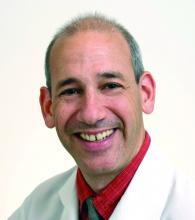Despite clinical practice guidelines,1,2 the lack of informed providers remains the greatest barrier to optimal transgender medical care, notable even with improvement with regard to other barriers to care.3 Barriers accessing appropriate care play a significant role in the persistent health disparities experienced by transgender individuals, such as increased rates of certain cancers, substance abuse, mental health concerns, infections, and chronic diseases.
In the United States, transgender people make up an estimated 0.6% of the population.4 Transgender individuals have unique health needs. However, when surveyed, most members of the medical community report that they are not adequately trained to address those needs.5 There is a need for health care providers to be comfortable treating, as well as versed in the health needs of, transgender patients. Physicians and medical students report having knowledge gaps in transgender health care because of insufficient education and exposure.
For medical students, the Association of American Medical Colleges (AAMC) launched a guide for medical schools in 2014 regarding the integration of LGBT-related curricula. Still, in a survey of 4,262 medical students from 170 medical schools in Canada and the United States, 67% of students rated their LGBT-related curriculum as “very poor,” “poor,” or “fair.”6
Data that are transgender specific are scarce. In a transgender medicine education–specific survey done among 365 Canadian medical students attending English-language medical schools, only 24% of them reported that transgender health was proficiently taught and only 6% reported feeling sufficiently knowledgeable to care for transgender individuals.7 Additionally, a survey among 341 United States medical students at a single institution reported that knowledge of transgender health lagged behind knowledge of other LGB health.8
Park et al. reported on the expanded Boston University School of Medicine (BUSM) transgender medical education model which supplemented the AAMC framework with evidence based, transgender-specific medical–education integrated throughout the medical curriculum.9 Beyond the AAMC-suggested program, first-year BUSM students in physiology learn about the biologic evidence for gender identity.10 In the following year, BUSM students are taught both the classic treatment regimens and monitoring requirements for transgender hormone therapy as part of the standard endocrinology curriculum.11 Following the first 2 years, students reported a significant increase in willingness to care for transgender patients and a 67% decrease in discomfort with providing care to transgender patients.
However, the relative comfort with transgender-specific care still lagged behind the comfort for LGB care in general. In 2014, BUSM expanded its transgender programming further to include an experiential component with a clinical elective for 4th-year medical students.9 The transgender medicine elective included direct patient care experiences with transgender individuals in adult primary care, pediatrics, endocrinology, and surgery. Direct patient contact has been demonstrated to facilitate greater confidence in providing transgender medical care for other medical trainees.12
A mechanism for the national adoption of the BUSM approach should be instituted for all medical schools. Such a move could easily result in a significant improvement in reported comfort among students. After that, the goal should be to leverage opportunities to mandate experiential components in transgender medical education.
While aspects of health care for transgender individuals have improved significantly, education among healthcare providers still lags and remains the largest barrier to care for transgender individuals. With the identified transgender population continuing to expand, the gap remains large in the production and training of sufficient numbers of providers proficient in transgender care. Although data for effectiveness are only short term, several interventions among medical students have been shown to be effective and seem logical to adopt universally.

